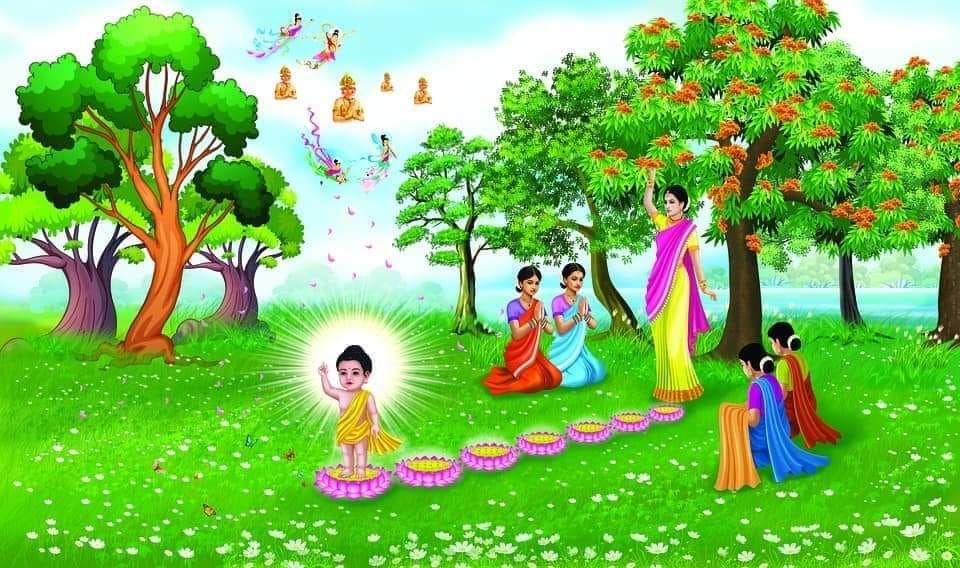Angulimala: The Serial Killer Who Became a Saint
During the time of the Buddha, in the court of King Pasenadi of Kosala, there was a Brahmin named Bhaggava Gagga, who served as the Royal Chaplain, one of the highest positions in the kingdom. One night, his wife, Mantani, gave birth to a son. The father examined the child’s horoscope and discovered that his son was born under the star sign associated with robbers.
At the moment the child was born, all the weapons in the city of Savatthi began to sparkle. The next morning, the Brahmin visited the palace. The king mentioned that he had not slept the previous night because the weapons sparkled. The Brahmin suggested that his newborn son may have caused the weapons to shine, but the horoscope indicated the child would live a solitary life. The king responded that they should educate the child properly to enhance his future.
The boy was named Ahimsaka, which means harmless. As he grew, he exhibited remarkable strength, diligence, and intelligence. According to tradition, he was sent to Takkasila, a renowned university in India, to pursue his studies. Ahimsaka worked diligently, surpassed his classmates, and maintained exemplary behavior, earning him the title of the teacher’s favorite.
Envious students approached the teacher privately, claiming Ahimsaka was conspiring to kill him. Suspicious and fearful of Ahimsaka’s prowess, the teacher called him aside at the end of the course. He said, “It is a tradition to honor the teacher after the course. Ahimsaka, bring me a thousand small fingers, each cut from a different person.”
Perhaps the teacher believed Ahimsaka would be caught and executed by the king. Although Ahimsaka’s family tradition forbade violence, he chose to comply out of respect. He ventured into the Jalini forest, living on a high cliff. When he spotted travelers, he would descend, kill them, and take a finger. He hung the fingers for birds to eat, discarded the bones, and strung them together as a garland. He became known as Angulimala, meaning “the one with the finger garland.”
Slowly, people moved away from the forest. Angulimala now approached villages, attacking passersby and severing their fingers. Families abandoned their homes, leaving villages desolate. In response, the king ordered a posse to capture Angulimala.
Angulimala’s mother believed that her son could still be saved. She ventured alone into the forest where Angulimala was hiding, pleading with him to abandon his sinful ways and return home. At that time, Angulimala had already collected 999 fingers and needed only one more to reach his grim goal of 1,000. Consequently, it was highly probable that he would kill his mother upon seeing her approach. Committing such an act against one’s mother is considered a grave sin, resulting in rebirth in the lowest hell.
Angulimala’s mother believed her son could still be saved. She ventured alone into the forest where Angulimala was hiding, pleading with him to abandon his sinful ways and return home. At that time, Angulimala had already collected 999 fingers and needed just one more to reach his grim goal of 1,000. It was highly probable that he would kill his mother upon seeing her approach. Such an act is considered a grave sin, resulting in rebirth in the lowest hell.
The Buddha, while observing the world, recognized Angulimala, recalling that in a previous life, Angulimala had been the Bodhisattva’s uncle. The Buddha immediately walked thirty miles to meet him with the intention of saving him.
Angulimala first saw his mother approaching and decided to kill her to obtain the thousand fingers. At that moment, the Buddha appeared as a monk on the road, positioned between Angulimala and his mother. Upon seeing the Buddha, Angulimala thought it would be better to kill the monk instead of his mother.
Angulimala then took his sword and pursued the Buddha. He ran as fast as he could, but he was unable to catch up with the Buddha, who was walking at a steady pace. Angulimala believed he had overtaken an elephant, a horse, and a galloping deer, yet he could not catch the monk who was simply walking.
Angulimala called out loudly, urging the monk to halt. The Buddha responded that he had already stopped, while Angulimala should cease his actions now.
Angulimala remarked that the monk was walking. Why did he claim that he had stopped, when in fact Angulimala had stopped because he could not catch up? Why did he insist that he had not yet stopped?
The Buddha replied that he had permanently ceased all violence against living beings, while Angulimala had not yet done so.
Angulimala was deeply moved, realizing that he had encountered a venerable being. He resolved to abandon all evil and learn the Dharma from the Buddha. Angulimala cast his weapons into a deep pit, bowed before the Buddha, requested ordination, and became a monk.
Once, while on his alms round, Angulimala learned of a woman in labor who was experiencing difficulties during childbirth. Out of compassion, he returned to inform the Buddha, who instructed him, “Angulimala, go to Savatthi and tell that woman: ‘Sister, since I was born into a noble family, I have never intentionally taken the life of any living being. By that truth, you and your child are safe!'”
Angulimala’s noble birth refers to his renunciation as a monk and the culmination of his attainment of Arahantship.
Angulimala had informed the woman in advance that he would come to her aid. The people present had set up a curtain in the woman’s room, with a chair placed on the other side for the monk to sit. Upon arriving at the woman’s house, Angulimala affirmed the truths taught by the Buddha, and soon both mother and child were safely delivered.
Video 6:04 minutes long:
https://youtu.be/-SaunGYbR38
https://phapnhan.org/tv/angulimala-tu-ke-sat-nhan-hang-loat-tro-thanh-vi-thanh/
.






















